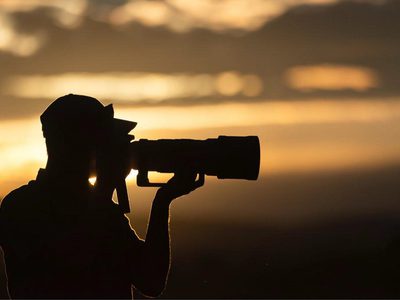
Going on a photography safari to Africa is pretty much every photographer’s dream no matter what their experience, from beginner to dedicated professional.
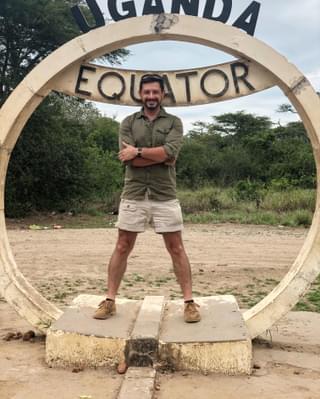
Africa provides a rich tapestry of photography opportunities from capturing the emotions and heart-stopping action of the Great Migration across the Serengeti in Tanzania and Masai Mara in Kenya, portraits of the Great Apes of Africa or the remarkable and vibrantly colourful tribes which call this marvellous continent home - there is plenty to peak any photographer's inspiration.
Before we delve into what I believe are amongst the Top Ten Photography Safari Lodges and Camps in Eastern and Southern Africa, let’s take a look at what aspects you might wish to look out for, expect and some key facilities and features a lodge could provide when on a photographic safari.
Vehicles
These are one of the key elements of a photography safari experience in my opinion. There should be ample room for guests to move around safely, offering a multitude of positions to offer different angles in order capture varying and interesting compositions. And of course, offering unobstructed views of the wildlife you’ve travelled so far to photograph. It can be very frustrating when you’re trying to take your shot when there’s a pole in the way!
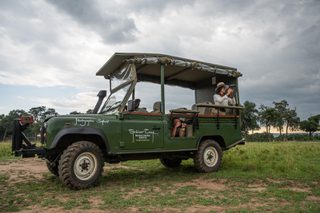
For example, some safari 4x4’s will have a passenger door which can be removed or partially removed to offer a photographer the opportunity to get some low down, eye level compositions.
Others may be fitted with beanbags on the eternal armrests which enables photographers to rest their cameras on to offer more stability when taking that all important shot. That said, some may be fitted with monopods and gimbals – again allowing for a more stable shot with less camera shake.
Depending on your destination – safari lodges may also offer boat safaris and these will sometimes be fitted with gimbals and rotating chairs.
Guides
Perhaps I’m a little biased here – but this is probably the most important aspect of a good photo-safari. A guide can either make or break your photographic safari experience.
A good photo safari guide will endeavour to get you safely (both from your perspective and the wildlife’s) into good positions to start taking images – positioning the vehicle taking into consideration lighting, background and minimising the disruption of the wildlife’s natural behaviour.
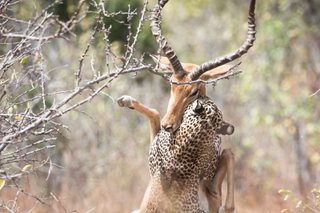
They’ll be able to point out the nuances, interesting details – such as the stunning patterns on a giraffe or interpret and predict the behaviour of the wildlife, explaining any potential situation which is unfolding – helping you to know where to point your camera in the right direction for key moments. Imagine your frustration of missing the dramatic moment as a leopard pounces on its unsuspecting impala target wasn’t telling you where to look or what to expect…
Depending on the type of photographic safari you go on, you may have a specialist guide sat with you in the back of the vehicle offering mentorship on elements of photography such as composition, settings and also helping to interpret the wildlife’s behaviour – all helping you to capture evocative images.
And of course, they should be prioritising YOU getting the shot rather than them.
Other guests
If you’re wanting to go on a dedicated photography safari but might be sharing a safari vehicle with other guests, be sure to go to a venue where other guests are also focused on photography. Sometimes you may be in a wildlife sighting and it may take some time for something to unfold. If you’re in a vehicle with guests not interested in photography, they may get a little impatient and want to move on in search of other wildlife… a Ferrari Safari so to speak. After all, one of the most important aspects of wildlife photography is patience…
Lodges
Throughout Eastern and Southern Africa there is a plethora of safari lodges and camps – some have excellent facilities catering especially for photographers. Some have dedicated review and post-processing rooms and tents. Some have specialist vehicles as mentioned above. Some have photography hides set up in key places. Others may have resident wildlife photographers to head out game drives with you, offering mentorship. Some may have all of the above and some might have none but instead offer location, location, location, enabling you access to the key species you’ve travelled so far to photograph… below is a list of my top ten lodges in no particular order...
1. Zimanga Private Game Reserve – South Africa
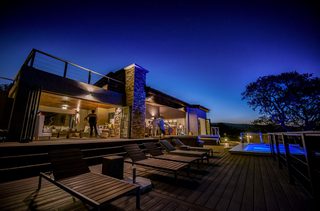
Set within a private game reserve in the heart of South Africa’s Kwa Zulu Natal sits an absolute gem for wildlife photography enthusiasts. Zimanga Private Game Reserve offers exceptional game viewing with several state-of-the-art photography hides, including reflection pools and a specially designed overnight hide where photographers have the opportunity to photograph nocturnal wildlife as they venture to a waterhole to drink.
The lodge is elegant and homely in its own right and overlooking a central valley and is the ideal place to discover the beauty of the African bushveld.
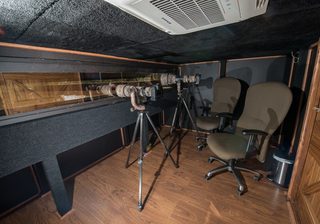
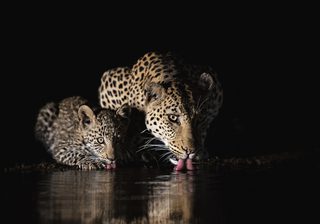
2. Dinaka Lodge – Kalahari, Botswana
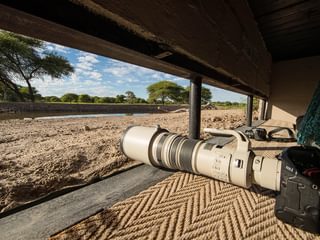
Dinaka in Botswana's central Kalahari, with its luxury accommodation is surrounded by abundant wildlife, unique landscapes. Located in a private reserve in the central Kalahari, this beautiful property focuses on exploring the area and it’s wildlife; Kalahari lions, cheetah, leopards, brown hyena honey badgers and bat-eared foxes to name a few… plus with it’s sunken hide located next to a permanent waterhole, the photography opportunities are excellent. Guests also have the opportunity to spend a night on a sleep-out deck, which offers you the opportunity to spend the night under the magnificent night skies of Africa.

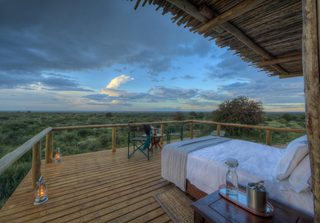
3. The Hide - Hwange, Zimbabwe
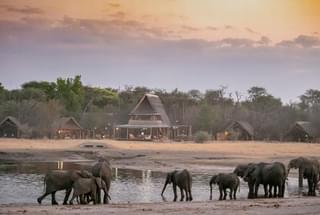
Located in a prime position in Zimbabwe's Hwange National Park, The Hide offers a life-enriching safari experience for its guests, from its fantastic game viewing right on your doorstep. The Hide is famous throughout Africa for offering guests access to its perfectly positioned hides where herds of elephants and buffalo, prides of lion and packs of wild dog frequently come to quench their thirst.
Not only is The Hide famous for its wildlife photography, it's also known for it's beautiful accommodation with each luxury tent having access to its own private veranda overlooking a busy waterhole.
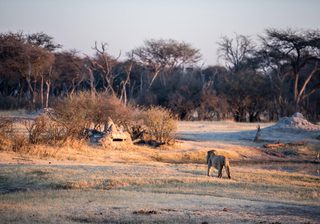

4. Vundu Camp - Mana Pools, Zimbabwe
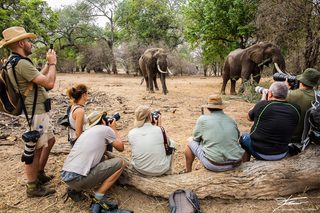
This brilliant camp, which is family run by Nick and Desiree Murray, is synonymous for an authentic safari experience deep within one of my favourite parts of the world, Mana Pools National Park - a photographer's paradise! It is one of a few parks that allows you to get out of your vehicle, thus allowing for up close encounters and lower camera angles.
The light also varies dramatically throughout the day and in different areas of the park. Without over-stating, it's simply stunning. And your host Nick is one of the most respected guides in the industry. He also played an integral role in the filming of the Wild Dog episode of BBC's Dynasties series.
Vundu Camp is located right on the banks of the mighty Zambezi river and offers photography adventurers a homely relaxed feel in the heart of Zimbabwe.

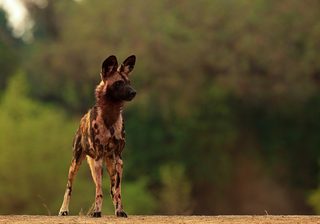
5. Buhoma Lodge - Bwindi Forest, Uganda
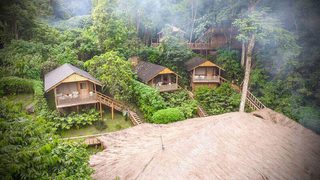
One of only two lodges located within the boundaries of Uganda's Bwindi Impenetrable Forest, Buhoma Lodge puts you in the ideal place to go in search of the endangered mountain gorilla. The lodge may not be centric towards photographers but here, location is the key. It overlooks the forest, providing a truly 'Gorillas in the mist' setting. And, it's only a short walk to the meeting and briefing point where gorilla treks embark each morning.
The lodge itself is cosy, yet with intimate quality with treehouse chalets providing sumptuous views. What more could you ask for when going in search of mountain gorillas?
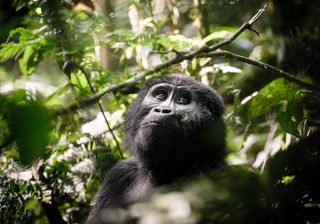
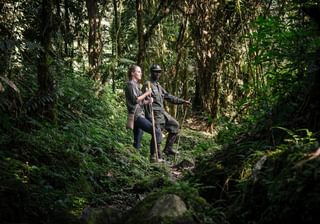
6. Alex Walker Serian - Masai Mara, Kenya
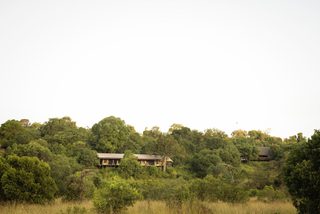
The word ‘serian’ comes from the Masai language, meaning ‘serene… calm… tranquil’ and there is nowhere quite like the middle of nowhere to succumb to a serious case of lens-envy. Safari goes hand-in-hand with photography, and being in such a stunning and surreal environment naturally stirs our instinct to capture it all and take it home with us.
Alex Walker Serian's original camp is impeccably placed in the privacy of the Masai Mara's, Mara Northern Conservancy, which ultimately means you're in the midst of one of the most densely populated areas for lion left in the world today... and in the right season, you'll be in prime position for one of nature's greatest spectacles - The Great Wildebeest Migration... need I say more?
Alex Walker Serian camps also have numerous resident and visiting in-house wildlife photographers to join you on safari, giving you as much or as little mentorship as you wish
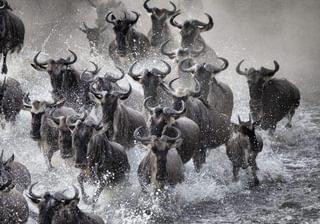
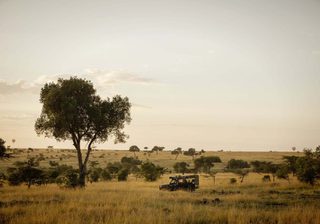
7. Ndutu Safari Lodge - Serengeti, Tanzania
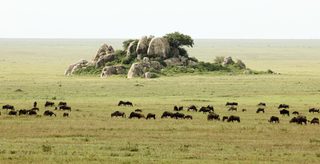
Ndutu Safari Lodge has built a reputation over the past 50 years as consistently being the choice of expert guides, professional wildlife photographers, film-makers and biologists alike. The reason? It is simply the best place in the Serengeti eco system to watch and enjoy predators and prey, herds and hunters and is one of the finest locations to witness the extraordinary speed and spectacle of cheetah hunting their prey.
Close to some of the famous kopje's of the Serengeti, where large rocks give predators a birds eye view over the surrounding plains as they scan for prey. If you want some where which has become synonymous and set the standard for wildlife photography... this is the place for you...
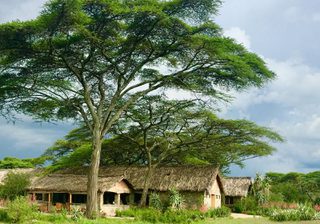
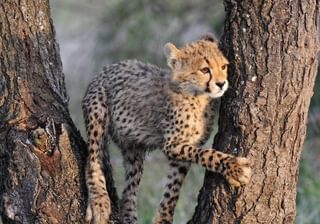
8. Kaingo Camp - South Luangwa, Zambia
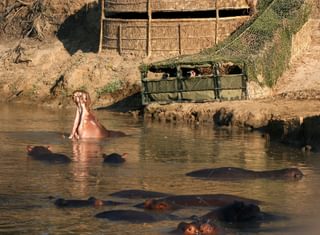
Overlooking the Luangwa River deep within the prime area of the South Luangwa National Park is Kaingo, a charming, authentic bush camp which offers superlative game viewing in incredible areas of raw, natural beauty. Kaingo has access to brilliantly positioned wildlife hides as well as something rather special... a floating hide which takes you up close and personal to the colourful carmine bee-eaters which build their nests within the banks of the river. Perfect for wildlife and bird photographers to capture these remarkable birds as the zip in and out of their holes.
The camp itself is a wonderful balance of comfort, charm and friendly staff with a bar set in a 1000 year old leadwood tree. All making a superb setting for those looking for a more authentic safari experience.
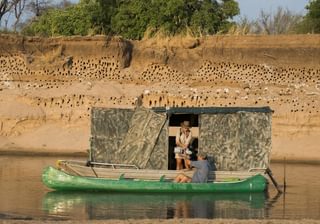
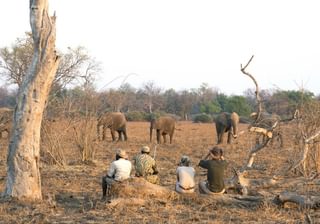
9. Tuli Safari Lodge - Tuli, Botswana
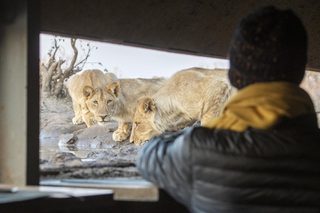
Set on the bank of the mighty Limpopo River, with beautiful rolling lawns surrounded by sandstone outcrops. This 4-star camp has a swimming pool tucked away against the giant rocks, a star gazing deck and access to splendid photography hides.
Deep within Botswana's Tuli Block, Tuli Safari Lodge is located in the midst of the private Mashatu Concession - which is sanctuary to the largest herds of elephant on privately owned land on the continent. Lions, leopard and cheetah roam in abundance in the area and for those keen birders; there are over 350 species for you to tick off. No wonder Tuli and Mashatu are world famous when it comes to wildlife photography in Botswana
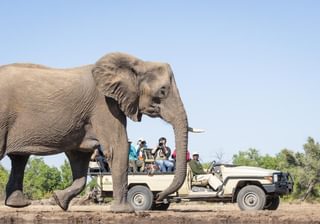
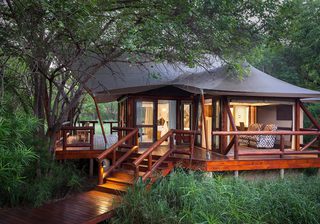
10. Pangolin Chobe Hotel - Chobe River, Botswana
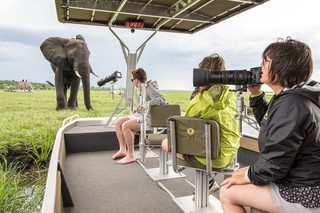
The Pangolin Chobe Hotel is perched on a hill above the town of Kasane, the gateway to Chobe National Park and is famous the world over with wildlife photographers. When it comes to wildlife photography, Chobe National Park is one of the best locations you could choose, with animals and bird-life in abundance combine this with a property that is all about photography, then you have a 10/10 combination. Game drive and boat cruises will get you up close to some of Africa's most iconic wildlife.
Pangolin has a superb team of in-house wildlife photographers to give you as much photography mentorship as you need. They also have a rental service for guests who wish to try out some truly special lenses and cameras.
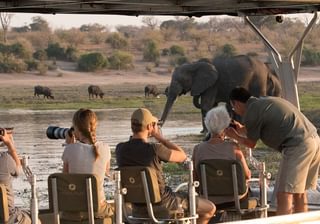
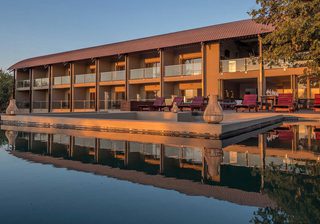
I hope that has given you some inspiration of where to go for your next photography safari in Africa. Of course, there are many, many more fantastic options available for the the discerning photographer and if you would like help planning a photography safari experience to any of the above mentioned places, our experienced Africa travel specialists can create the perfect tailor-made safari for you.































